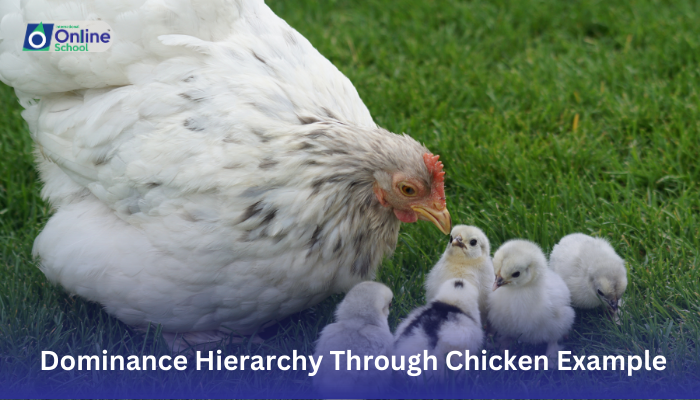
Learning Outcomes:
i. Define dominance hierarchy and its role in animal social structures.
ii. Explore the classic example of the pecking order in chicken flocks.
iii. Understand the mechanisms and benefits of establishing dominance hierarchies.
iv. Appreciate the complex interplay between competition and cooperation within hierarchical structures.
Introduction:
Imagine a world where every interaction carries a silent weight, where rank determines every peck, every strut, and every scrap of food. This is the realm of the dominance hierarchy, an intricate social structure where animals establish and maintain their position within the group. In this lesson, we'll step into the bustling coop of a chicken flock, unraveling the secrets of their infamous pecking order and understanding the fascinating dynamics that unfold within hierarchical societies.
i. The Ladder of Feathers: Establishing the Pecking Order
The pecking order in chickens is a classic example of a linear hierarchy. From the top-ranking rooster or hen, known as the alpha, to the lowest-ranking individuals, every chicken has a designated position. This hierarchy is established through a series of interactions:
Aggressive Displays: Dominant individuals puff their chests, spread their wings, and peck at their subordinates, asserting their authority.
Submission Signals: Subordinate chickens cower, crouch, and offer submissive vocalizations, acknowledging their lower position.
Ritualized Fights: In some cases, brief but intense fights determine the outcome of a challenge, establishing a new pecking order.
ii. The Benefits of Order: Peace, Predictability, and Efficiency
Contrary to popular belief, a stable hierarchy doesn't just lead to constant squabbling. It offers several benefits:
Reduced Conflict: Knowing their place minimizes unnecessary aggression, allowing the flock to focus on essential activities like foraging and raising young.
Efficient Resource Allocation: Dominant individuals have priority access to food, mates, and prime nesting sites, ensuring the survival and reproduction of the strongest members.
Organized Group Behavior: Clear leadership facilitates collective decision-making, enabling the flock to move and respond to threats as a unified unit.
iii. Beyond the Pecking Order: The Nuances of Hierarchy
It's important to remember that dominance hierarchies are not rigid structures. The pecking order can shift depending on various factors like age, experience, resource availability, and even individual personalities. Alliances may form, challenging the established order, and dominant individuals might even show tolerance or even kindness towards their subordinates. The key is a dynamic balance between competition and cooperation, ensuring the overall well-being and survival of the flock.
The pecking order in chickens is a captivating example of how dominance hierarchies shape animal societies. It reminds us that competition and cooperation are not mutually exclusive forces; they can coexist and even intertwine to create stable and resilient social structures. So, the next time you witness a rooster strutting with a puffed-up chest or a hen cowering in submission, remember that you are witnessing a glimpse into the fascinating world of animal hierarchies, a testament to the power of order and the delicate balance that maintains harmony within the feathered community.